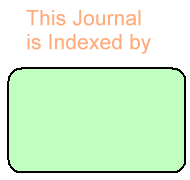San Li1,2,
Hui-Ming Dang1,2,
Shan Xu2,
Lei Liu1 ![]() ,
Yi-gang Tong1,2
,
Yi-gang Tong1,2
For correspondence:- Lei Liu Email: liuleitianxue@163.com Tel:0086-0454-8618295
Received: 22 February 2025 Accepted: 16 April 2025 Published: 07 May 2025
Citation: Li S, Dang H, Xu S, Liu L, Tong Y. Inhibitory effect of emododstat on respiratory syncytial virus. Trop J Pharm Res 2025; 24(4):493-501 doi: https://dx.doi.org/10.4314/tjpr.v24i4.6
© 2025 The authors.
This is an Open Access article that uses a funding model which does not charge readers or their institutions for access and distributed under the terms of the Creative Commons Attribution License (http://creativecommons.org/licenses/by/4.0) and the Budapest Open Access Initiative (http://www.budapestopenaccessinitiative.org/read), which permit unrestricted use, distribution, and reproduction in any medium, provided the original work is properly credited..
Purpose: To identify anti-respiratory syncytial virus (RSV-A) candidates from the pool of approved drugs through drug repositioning and preliminary elucidation of their mechanisms of action. Methods: Human laryngeal epithelial carcinoma cells (HEp-2) were infected with RSV-A (GenBank: PQ594188). The cytopathic effect (CPE) was used to conduct an initial screening of 1213 compounds from the drug library. For the selected candidate drug, emvododstat, a dihydroorotate dehydrogenase (DHODH) inhibitor, further analysis was performed with Cell Counting Kit-8 (CCK-8) assay to determine the viral copy number using absolute quantification and to measure the half-maximal effective concentration (EC50), half-maximal cytotoxic concentration (CC50), and selectivity index (SI = CC50/EC50). A time-of-addition assay (TOA) was conducted to determine the phase of the antiviral action, and the potential mechanism involved was determined, in addition to the DHODH inhibitory properties of the drug. Results: Emvododstat exhibited potent anti-RSV-A activity with an EC50 of 5.23 nmol/L and SI > 19,120 thereby outperforming Ribavirin (EC50 = 14.5 μmol/L, SI = 52). The TOA assays revealed that Emvododstat primarily acted during the post-entry phase, with minimal inhibition of viral entry. Conclusion: This study has demonstrated, for the first time, that Emvododstat exerts nanomolar inhibitory activity and high selectivity against RSV-A viruses. This finding highlights the potential of drug repositioning strategies in antiviral drug development. Although its mechanism of action has not been fully clarified, the high selectivity and low cytotoxicity of Emvododstat provide an important basis for its clinical application
Archives


News Updates